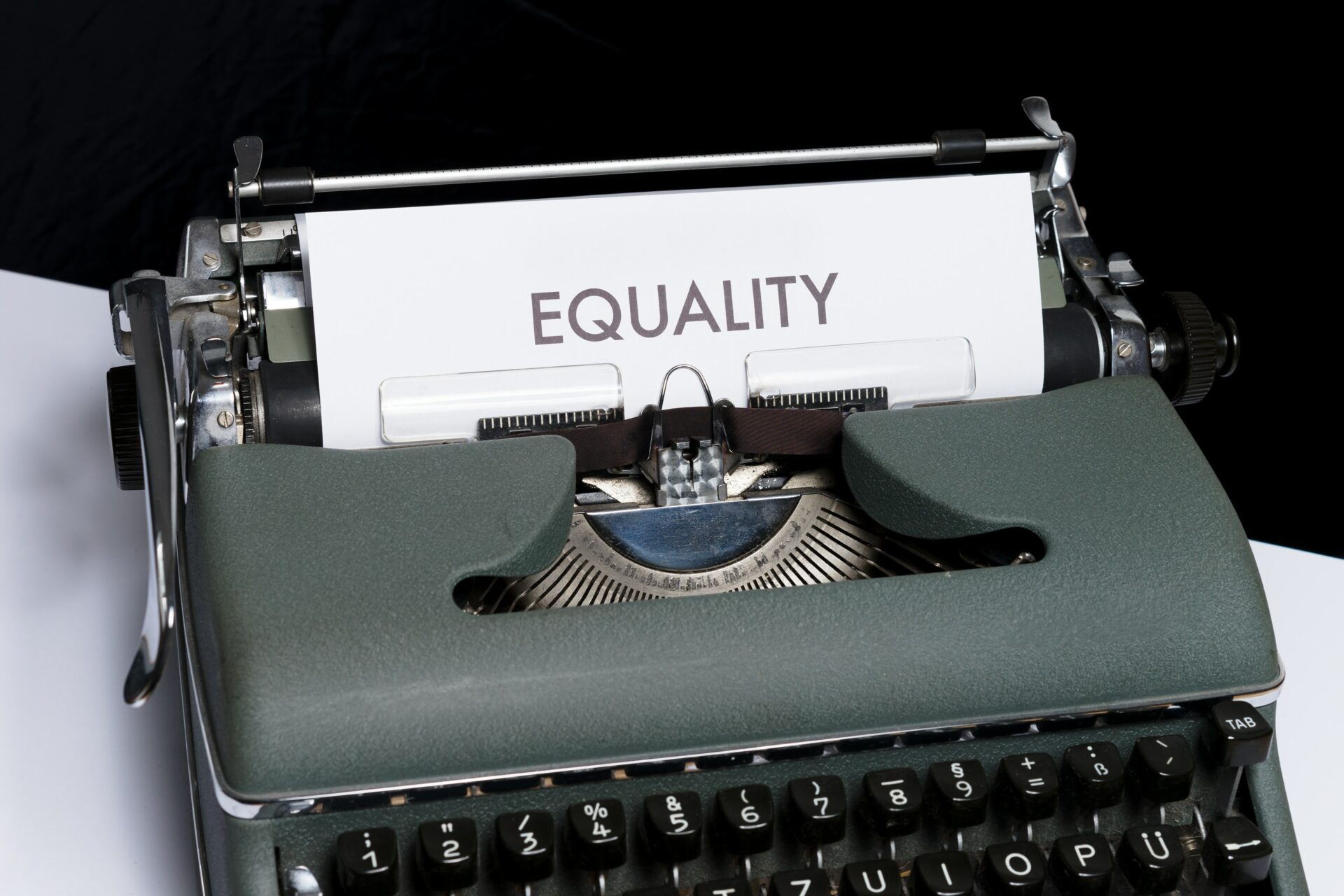Race—The struggle for equality, equity and education
Parts I and II of this 3-part series examined the history of racism and how the word “race” itself is inherently racist, as well as the current state of discrimination. Here, we look at critical race theory (CRT) and policy recommendations on the path to equity regardless of skin color and ethnicity.
Since its inception in the 1970s, CRT has sought to establish a better understanding of how discrimination and inequity are perpetuated in the law. The concept, which was put forward by Harvard professor Derrick Bell (the university’s first tenured Black law professor) and began to gain prominence in the 1990s and early 2000s, is currently the topic of heated debate, with several US states banning its teaching in schools. However, much of the controversy surrounding CRT is based on loose or even erroneous definitions of the theory. These include the assertion that a critical examination of past human-rights abuses such as slavery and legally mandated segregation will foster a negative attitude toward America. Nate Hochman, a Publius fellow at the conservative Claremont Institute in California, has stated, “We’re teaching young people to hate the country they’re going to inherit.” We contend that the opposite is the case: the United States of America was founded on high ideals. Like many—perhaps all—nation-states, it was born far from perfect and has gone through many stages of self-reckoning and correction. By encouraging young people to confront the demons of racism and work toward true equality, the country can pay homage to its high ideals and capacity for self-renewal. And these are qualities that should inspire love, not hate.
In essence, CRT regards discrimination and injustice as systemic, rather than solely the result of individual racist persons or institutions. It clearly defines “race” as a social construct. Given the statistics cited above, it is hard to deny that inequities based on the legacy of discrimination continue to shape outcomes in society, the economy, culture and politics.
A further aspect of CRT is that it differentiates between equality and equity. It argues that equal opportunity is not truly equal unless it is provided on the basis of different stakeholders’ capabilities, and takes systemic disadvantages into account. A possible analogy might be a stairway leading to a public building: it offers equal access to all, in theory, yet is impossible to negotiate for those requiring a wheelchair. For this reason, most countries provide wheelchair-friendly ramps. Few would argue against the legitimacy of wheelchair users’ right to barrier-free access. This example refers, of course, to a physical disadvantage and is by no means intended to equate different ethnicities and skin colors with physical disabilities. Similarly, however, careful consideration is required to design policies that deliver equity by counteracting the systemic disadvantages faced by people whose skin color, ethnic background and other traits make them identifiable as part of an externally defined group. Only then will we achieve true equity.
This last point is not trivial: people who share a certain skin color and/or ethnic background are not necessarily part of a distinct group within society. All human beings have the right to associate with others based on free choice, not externally imposed groupings. People who have been disenfranchised in terms of education, employment opportunities, housing, etc. for generations, and continue to be disenfranchised today, share—above all—one characteristic: they have been disenfranchised for generations and continue to be disenfranchised today. If such a cohort chooses to call itself a “race”—in full awareness of the term’s history—this should of course be respected. However, the decision must be one of self-determination rather than outward imposition.
In this regard, critical race theory is a useful concept, but it can potentially have the negative side effect of supporting—or being instrumentalized to support—the illusion of discrete “racial” groups and “us against them” thinking.
Addressing these issues demands a comprehensive approach that begins early in human development, before the conditioning that creates arbitrary biases sets in. Think Equal, an organization dedicated to equality across genders, ethnicities, disabilities and other differences, founded by former filmmaker Leslee Udwin (India’s Daughter, 2015), identifies the window of opportunity at preschool age. It equips schools and preschool facilities with a complete program of various tools including illustrated storybooks that teach nondiscriminatory, nonviolent attitudes and ways of dealing with day-to-day life. In randomized controlled trials, the methodology has proven its effectiveness in countries all over the world.
Policy recommendations
Racism is deeply embedded in most societies, including those members of society that consider themselves quite open and liberal. Clear statements from policymakers and corporate decision-makers are called for. Our policy recommendations include:
- Let’s retire the term “race”: Getting rid of race in reference to human beings is more than a semantic nicety. Words make a difference. By divorcing ourselves from this ideologically loaded term in all communications, and using addenda to qualify it where its usage is necessary for the time being (e.g. in legal texts), we can begin to move away from centuries of xenophobia and ostracism.
- Equality as part of our basic human understanding of how the world works: The preconceptions of differences between ethnicities, skin colors and other characteristics are formed early, in the family and (pre)school. Much work is already being done in this area, but it needs to scale up and become a required element of curricula to have the needed global impact. Societies need such programs, potentially along the lines of Leslee Udwin’s Think Equal model (see above), to break down these cycles of hate and discrimination.
- Make it simple (even in small steps): Policies aimed at offsetting the disadvantages faced by minorities, such as Affirmative Action in the USA, have upsides and downsides, as reflected in the ample literature on the issue. However, governments and corporations can also take a more straightforward approach and simply favor companies that practice diversity and inclusion when awarding contracts.
- Equity and fair treatment positively impact the bottom line: Institutional investors can influence diversity and inclusion positively by allocating their capital to organizations that actively practice equality, diversity and inclusion. This not only supports equity and fair treatment of the working population regardless of skin color, but is also sound financial policy. As indicated by studies cited above, such organizations consistently outperform their less equitable counterparts on average.
These policy recommendations are intended as an inspiration for, and an invitation to, further discussions. Achieving true equality between people of all colors and ethnicities is a huge task with no one-size-fits-all solution. Similarly, doing away with the term “race” cannot be achieved overnight. On the other hand, these challenges are not insurmountable. Under pressure from sponsors and the public, multiple professional sports teams have recently abandoned discriminatory names. These include the US football team Washington Redskins (now Washington Commanders) and the Canadian football team Edmonton Eskimos (now Edmonton Elks). It also bears mentioning that most serious publications now use the term “Black” (with a capital B) for dark-skinned people of African descent rather than terms like Afro-American.
Again, words matter. But the good news is that language is malleable. While the authors do not wish to recommend a single alternative word for “race,” we cite the preferred term of anthropologists (category) as well as the direction in which legal language is going (color, continent of origin, national origin, descent from ancestors of a particular color, national origin, religion, ancestry). With this toolbox of more precise terms, we should be able to talk about people in their different colors, shapes and sizes without using the language of oppression. Let’s work together to change our language and thoughts about such a pivotal issue as equity across skin colors and ethnicities. And above all: when we put our money where our mouths are, money talks—and drives change.
Part III in a 3-part series by Michael Durrie and Arushi Gupta, The Digital Economist



